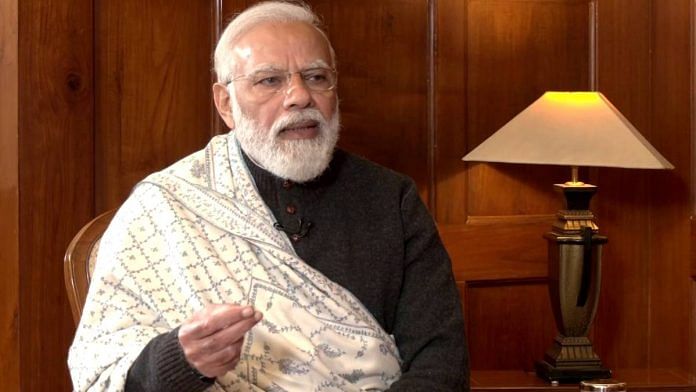The Bharatiya Janata Party has long been accused of mobilising voters on the Hindu-Muslim polarisation that remains quite visible in the non-nomination of Muslim candidates in parliamentary as well as state assembly elections. But when it comes to caste-wise representation in the ongoing Uttar Pradesh assembly elections, the party seems to be finally paying attention to its past mistakes. However, much needs to be done.
The BJP, along with its allies, Apana Dal (S) and Nishad Party (NP), have finalised candidates for the 403 assembly constituencies of Uttar Pradesh. Several BJP leaders such as Asim Rai, Raj Prasad Upadhyay, Rishi Tripathi etc. have been contesting on the ticket of allies because they have a strong winning possibility. Candidates from Apna Dal (S) and NP are also using BJP’s electoral symbol because their own parties are little known in some constituencies.
I provide a descriptive analysis of the caste composition of candidates of BJP and its allies for the ongoing assembly election in Uttar Pradesh. I have collected this data through phone calls and interactions with local office bearers and voters.
Category-wise candidate distribution
The figure below provides a category-wise description of BJP and its allies’ candidates. They have been arranged into four broader categories — dominant castes, backward castes, Scheduled Castes/Scheduled Tribes, and Muslims. Only one Muslim candidate has been nominated from the National Democratic Alliance (NDA) group, who is from Apana Dal (S) in the Suar Tanda constituency of Rampur district. Neither the BJP nor the Nishad Party has nominated any candidate from the Muslim community.
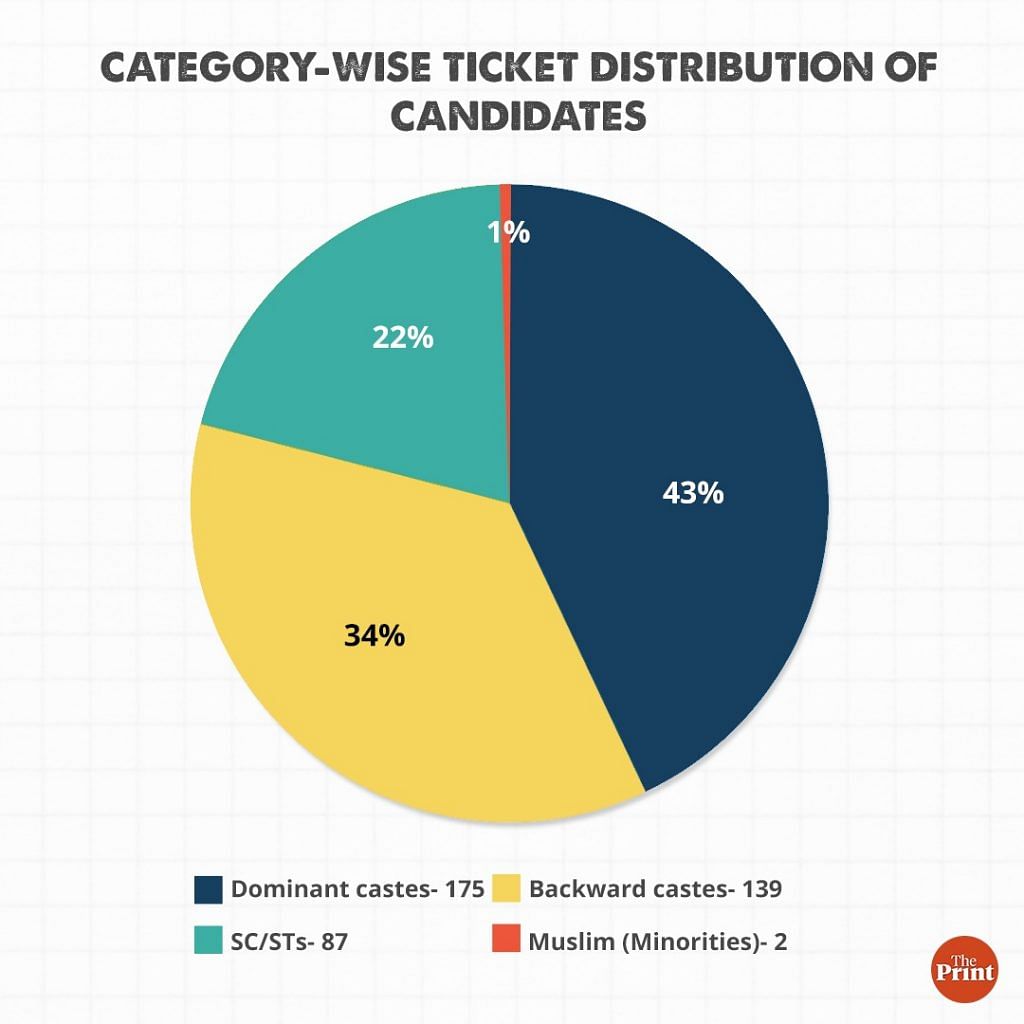
The above figure reveals that dominant castes have been given the highest share in the candidate nomination of BJP and its allies. While 175 candidates have been nominated from the dominant castes, 139 have been nominated from the backward castes. Meanwhile, 87 candidates have been nominated from SC/ST groups. All SC/ST candidates have been nominated on the reserved constituencies.
Also read: The BJP’s ‘2ab’ factor that’s missing from SP, BSP, Congress in UP elections
Composition of dominant caste candidates
Among all the 175 dominant caste candidates, the highest number of tickets — 68 — have been given to Brahmin candidates. Rajputs acquire the second position with 67 candidates in this seat distribution. It was said that Brahmins have been sidelined in the BJP government in the last two years, due to which Brahmin anger against the Rajput majority in the Yogi Adityanath government has been increasing. In the outgoing government, cabinet ministers from the Rajput caste surpassed the Brahmins. However, the data indicates that this is not the case. For BJP, they might still possibly be a priority.
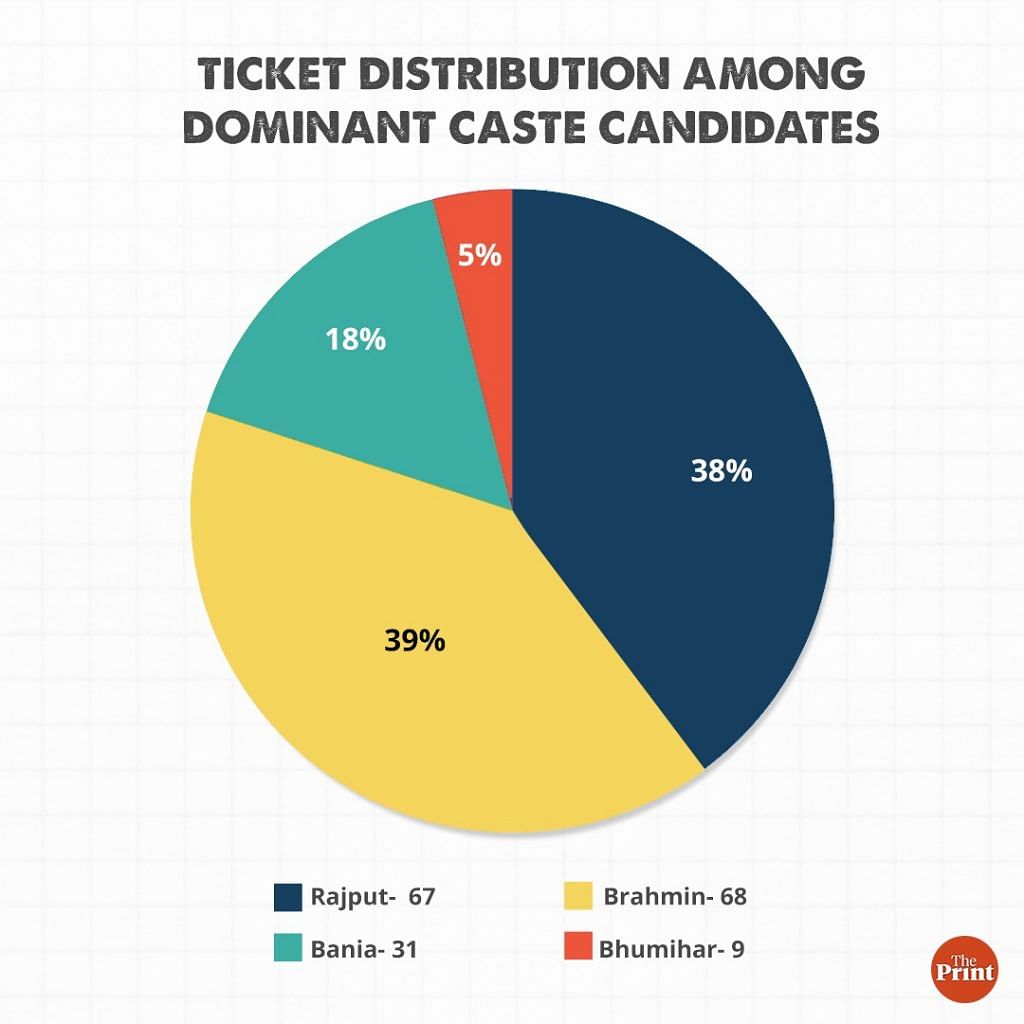
The Bania/Kayasth/Khatri castes come third in the sharing of tickets. They have been given 31 seats. Meanwhile, the Bhumihars, who are mostly present in some pockets of western and eastern districts of the state, have nine candidate nominations.
Social engineering in backward castes
The composition of backward caste candidates of the BJP and its allies reveal that the alliance favours the Kurmi caste. This time, 35 candidates have been nominated from the Kurmi and Sainthwar castes, and 25 from the Maurya, Kushwaha, Shakya and Saini castes. It’s possible that the BJP has fielded a significant number of candidates from Maurya, Kushwaha, Shakya and Saini castes due to fear of being deserted since two prominent leaders of the community jumped ship just before the elections.
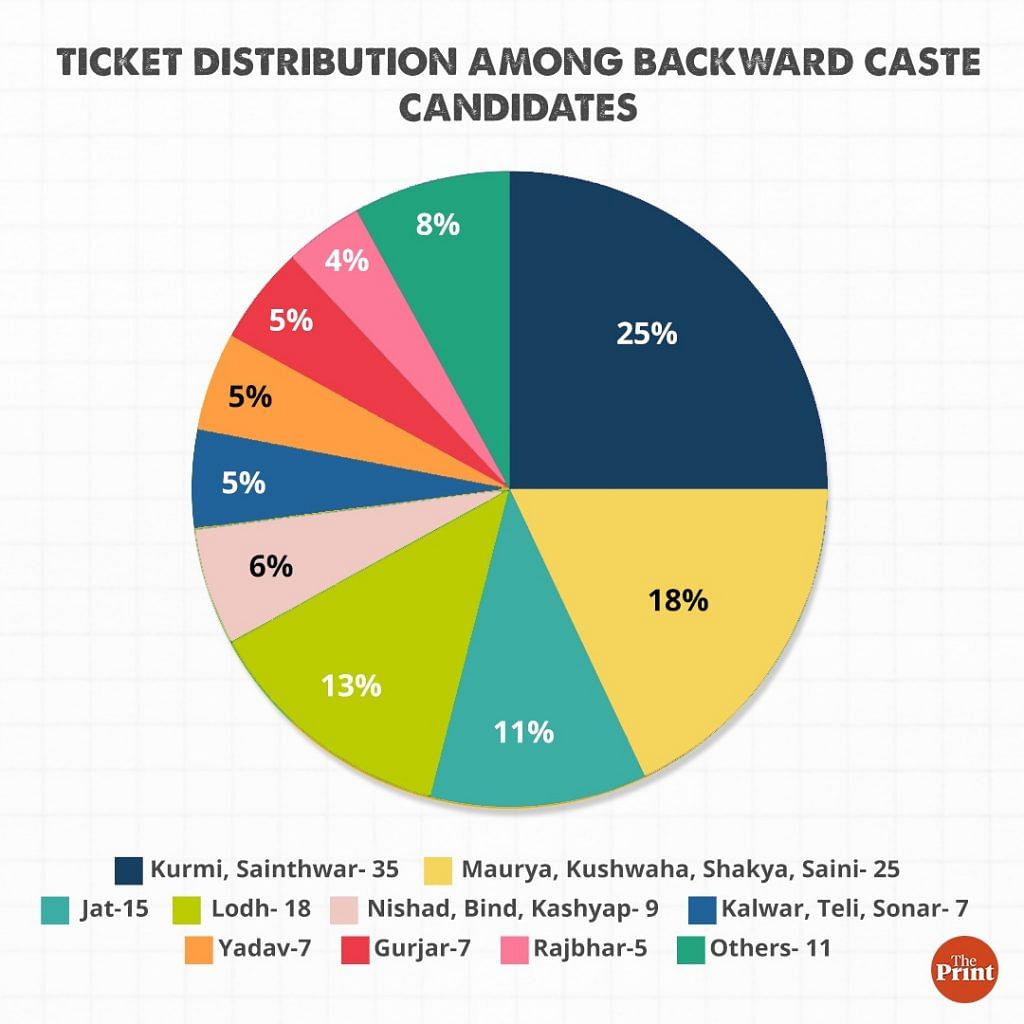
The alliance has also nominated 15 candidates from the Jat caste, primarily in western Uttar Pradesh. Meanwhile, the Lodh caste, which has been a strong supporter of the BJP since Kalyan Singh days, has found 18 tickets to its name. The BJP-AD-NP alliance has also given nine tickets to Nishad, Kashyap, and Bind castes, who are mostly spread in constituencies along the rivers. The Kalwars, Telis and Sonars have been given seven tickets, and so have the Yadavs. Seven seats have been given to the Gurjars, and five to the Rajbhars. The remaining 11 seats have been given to the rest of the backward castes that are numerically smaller.
Also read: In the ‘battle of Bundelkhand’, BJP, BSP and SP have a new weapon — election tickets
Reserved constituencies
The BJP and its allies seem to have done a lot of homework in the distribution of 87 reserved seats. The alliance has given 26 seats to the Chamars and the Jatvas, who constitute around 60 per cent of the SC/ST population. Similarly, the Pasis have been also been given 26 tickets, although they are not nearly as populous as the Chamars/Jatavs. The Dhobi caste will see seven candidates being fielded, while six candidates each from the Khatik caste, and eight candidates from Kori caste have been accommodated. Two tickets have gone to the Balmikis. The rest have been given 12 seats.
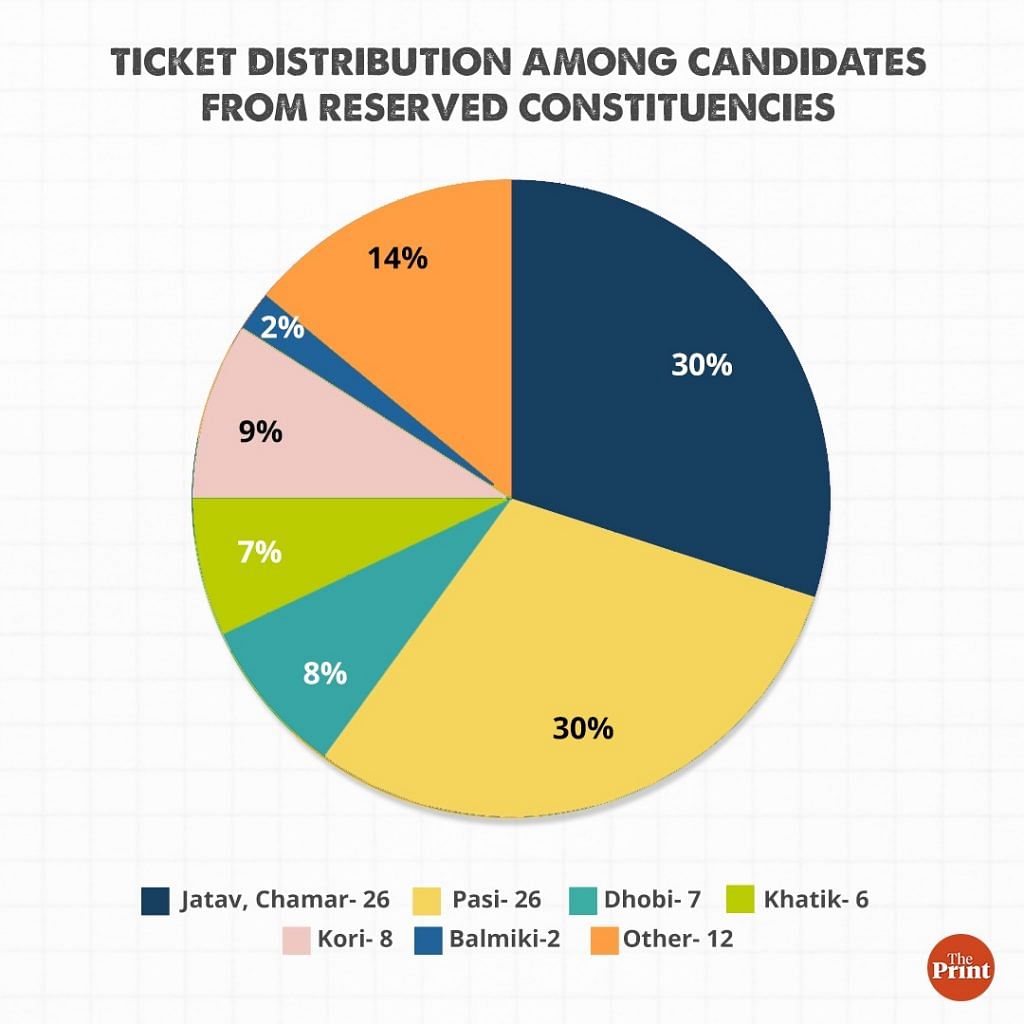
The candidate composition of BJP and its allies reveal that Rajputs take the lion’s share in the overall candidate nomination, followed by Brahmins. The alliance seems to have gone deep into the social engineering of backward and scheduled castes and has tried to nominate as many castes as possible so that they can communicate and mobilise voters of their communities across the state.
Arvind Kumar (@arvind_kumar__), PhD in Politics, Department of Politics & IRs, Royal Holloway, University of London. Views are personal.
Read all of Arvind Kumar’s articles on ticket distribution in UP elections here.
A previous version of this article stated Rajputs had been given a greater share of election tickets than Brahmins. This, among other errors in data, has been corrected and updated.
(Edited by Srinjoy Dey)


